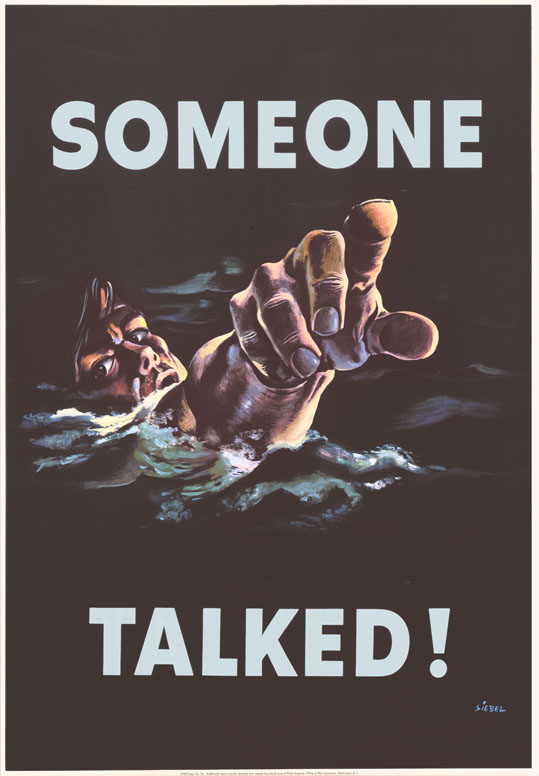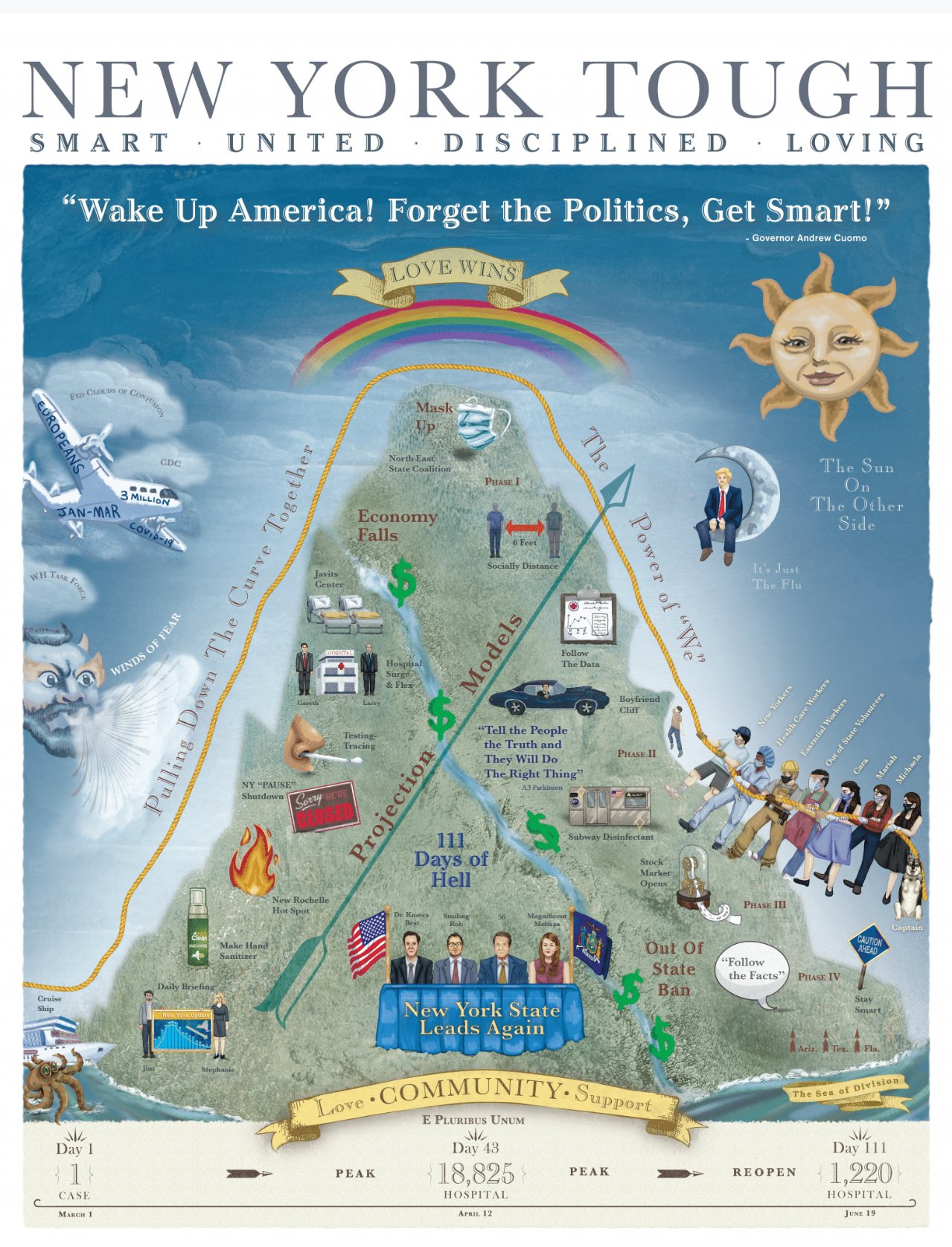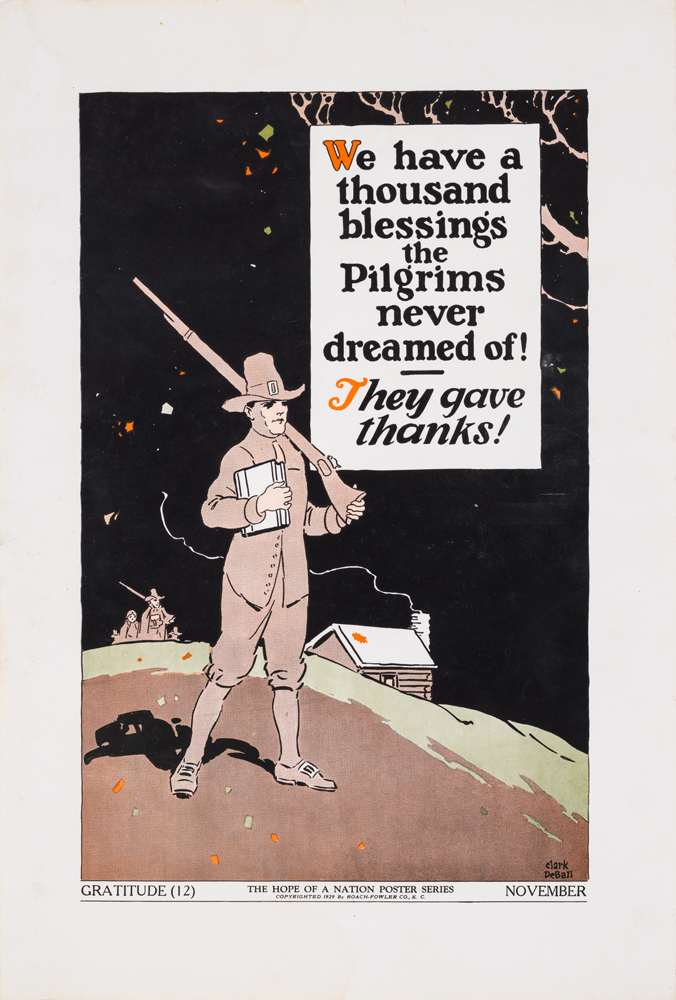
Posters in Context: Hope of a Nation
.As the year winds down and the most anticipated family-oriented holidays approach, firesides, frosted air, and warm treats come to mind. Such images are well represented in the work of Norman Rockwell, and his scenes of classic Americana remain the most familiar art of this kind. While exploring the museum’s collections, however, I came across a series of educational posters that create a similarly traditional sense of American identity; one of them also relates specifically to Thanksgiving. Like many historic posters, they offer a glimpse into a time of apparently embedded patriotism while encouraging us to consider those whose stories have been omitted from the official cultural narrative.
The Hope of a Nation series of 41 posters, 40 of which were created by Clark de Ball, was first published in 1929 and again in 1937 under the Works Progress Administration. The posters would have been displayed in classrooms, urging children to build good character and good habits by connecting the images to the values they represent, each noted at the lower left of the poster. One example of this virtue through pedagogy is a poster titled “Education” that welcomes children back to school in September. It emphasizes a well-rounded curriculum of sport, fun, study, and achievement, all of which were shown in the series.
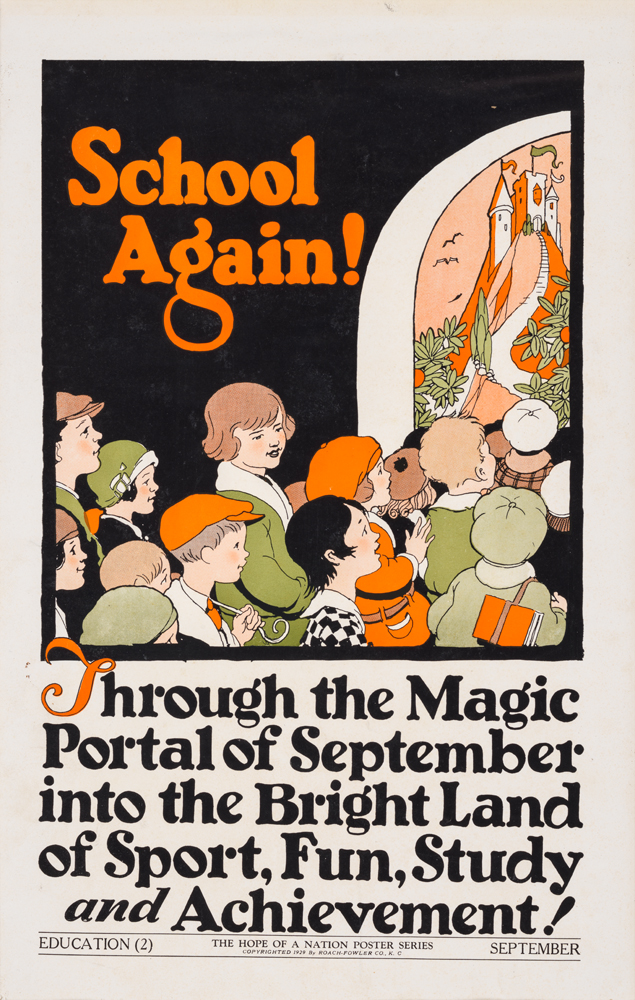
Poster House Permanent Collection
One of the posters presents Abraham Lincoln, nicknamed “Honest Abe,” as a symbol of honesty; his portrait appears above vignettes of his childhood home (a log cabin) and the White House to which he ultimately ascended. The message is clear: honesty is the best policy and one might even assume the highest position in the land by upholding this virtue.
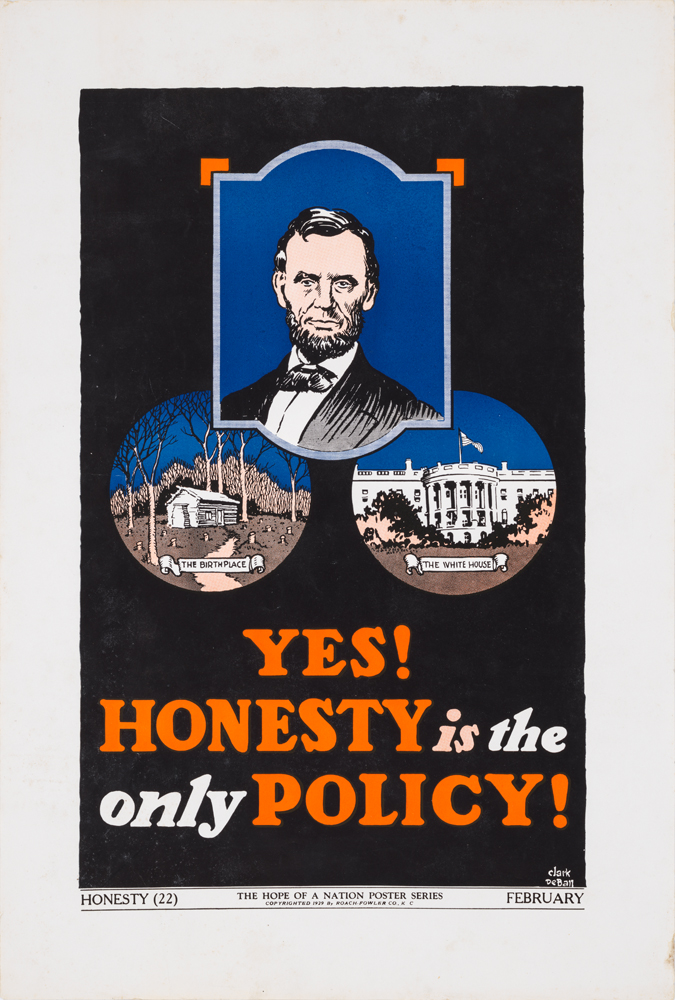
Honesty (1929), Clark De Ball
Poster House Permanent Collection
The poster of Abraham Lincoln is also connected to the poster from the series titled “Gratitude,” which was meant to be displayed in November for the upcoming Thanksgiving holiday.

Gratitude (1929), Clark De Ball
Poster House Permanent Collection
On October 3, 1863, President Abraham Lincoln established Thanksgiving as a national holiday. The day was intended for “Thanksgiving and Praise to our beneficent Father who dwelleth in the Heavens.” The figure of the Pilgrim here relates to the story of the English settlers of Plymouth, Massachusetts, known as Pilgrims, and the indigenous Wampanoag people, who celebrated the autumnal harvest together in a feast in 1621. The poster highlights an origin story with a specific message of unity and gratitude, connecting Americans to historic tradition with a single figure in the foreground and others in the distance following behind, perhaps to join in the celebration of Thanksgiving.
Today, many Americans, primarily indigenous people, illuminate the more complex and violent reality of European colonization as it relates to Thanksgiving Day. While the traditional narrative represented here suggests togetherness and hope, it excludes the genuine, painful history of the erasure of indigenous peoples and their way of life after the arrival of the Pilgrims.
In this context, the Hope of America series describes more than traditional lessons on good behavior; it points to the power of visual messaging. As the first poster suggests, the magic portal of education allows us to seek a more comprehensive understanding of American history that includes perspectives that have frequently been dismissed.

